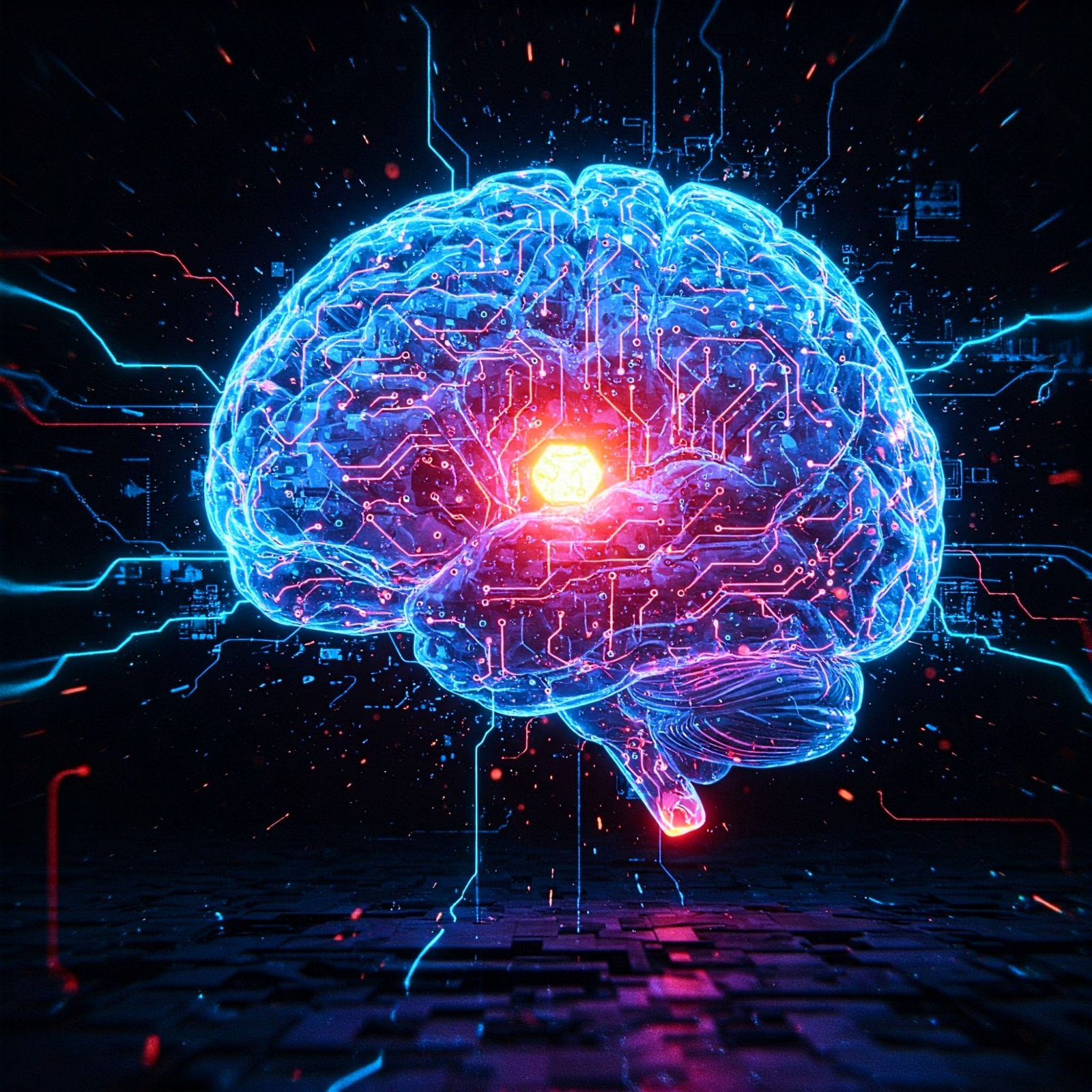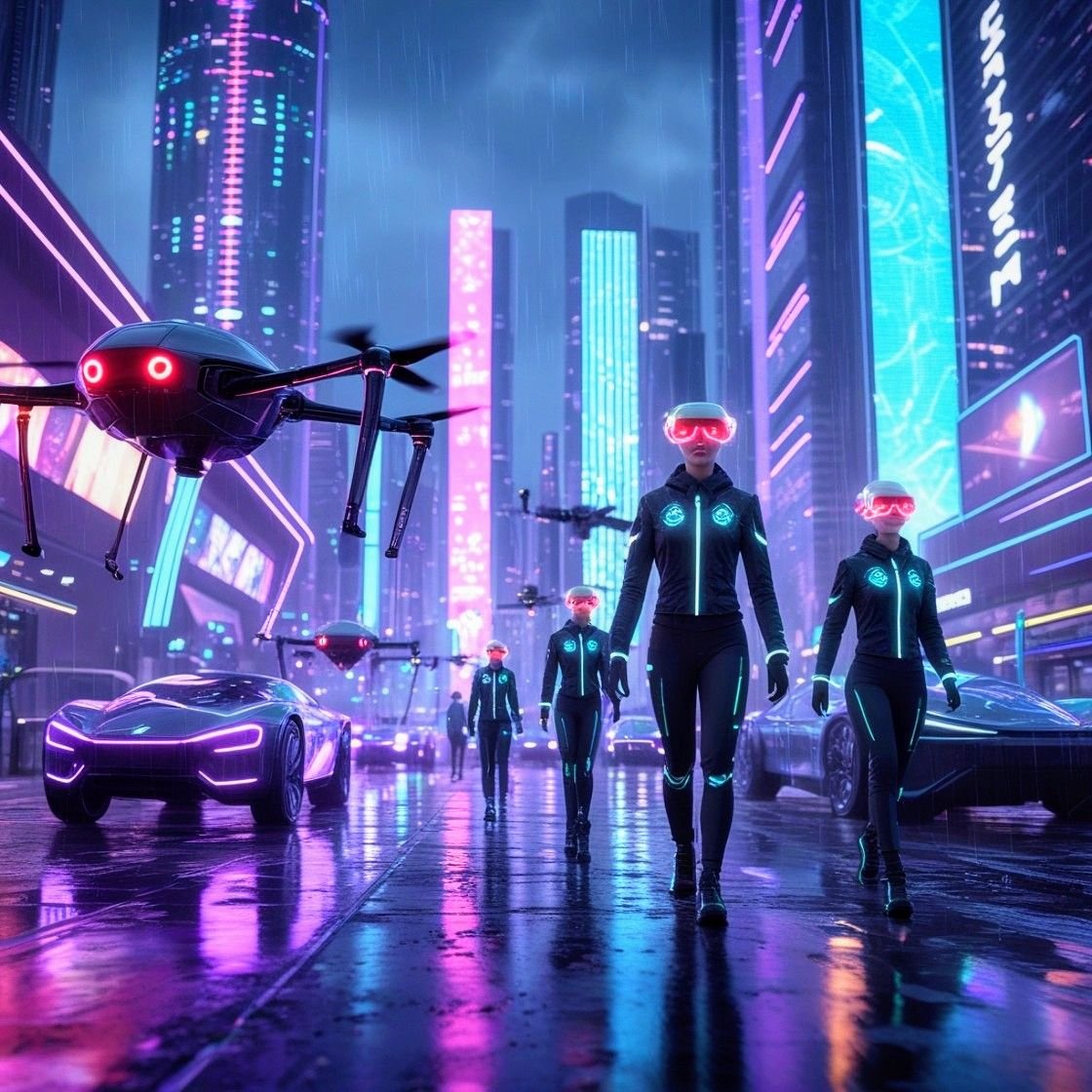AI-Generated Image. AI Solves World Hunger Crisis by Tech Is The Culture
How Algorithms Are Becoming Humanity’s Key To Solving The World Hunger Crisis
Picture this: A world where robots don’t just vacuum your floors but literally put food on your table. Where algorithms predict famines like weather forecasts, and 3D scanners shame you into finishing your kimchi. Welcome to the era where AI isn’t just crunching data; it’s crunching carrots, redistributing rice, and quietly saving the planet, one byte at a time. Let’s get into the deliciously nerdy ways tech is solving humanity’s oldest crisis.
Predicting Famines Before They Strike (The AI-Powered Crystal Ball To Prevent World Hunger Crisis)
Remember when predicting a famine required a Magic Eight Ball and a prayer? Well, now we have the Famine Action Mechanism (FAM), a UN-World Bank initiative turbocharged by AWS machine learning. This system gobbles up satellite imagery, weather data, crop yields, and even TikTok trends (kidding… mostly) to predict food shortages months before they escalate.
How does it work? AWS built an ML pipeline that analyzes everything from rainfall patterns in Somalia to avocado prices in Yemen. The result? A 30% reduction in humanitarian costs by triggering preemptive funding. Think of it as a “Hunger Games” where the odds are finally in our favor.
Swami Sivasubramanian, VP of Amazon Machine Learning, put it best: “For the first time in history, we can stop famines, not just mourn them.” And with models now 11% more accurate in conflict zones like South Sudan, AI isn’t just predicting crises; it’s preventing them.
AI That Shames You Into Eating Your Greens (The Food Waste Avengers)
Let’s talk about the elephant in the room: 1.3 billion tons of food is wasted annually; that’s enough to feed every hungry person twice over. South Korea, a nation that treats side dishes like Olympic medals, tackled this with Zero Waste Zero Hunger (ZWZH), an AI-powered 3D scanner that’s basically a food waste detective.
Here’s the recipe:
1. Scan your plate before and after meals.
2. Watch the AI calculate your leftovers’ carbon footprint.
3. Feel existential guilt as the screen flashes, “Your uneaten kimchi = 3 pine trees.”
The result? Cafeterias slashed food waste by 42%, and Korean soldiers now get 98 grams of rice instead of 110 because even privates can’t argue with math. Nuvilab CEO Logan Kim said, “Our scanner is like a gym coach for your plate.”
AI That’s Smarter Than Your Local Grocer (The Supply Chain Whisperer)
Ever wonder why your Amazon package arrives faster than your dating life? Meet Amazon’s Packaging Decision Engine, an AI that’s eliminated 2 million tons of packaging since 2015 by optimizing box sizes like a Tetris grandmaster. But it’s not just about saving cardboard AI is reshaping global food logistics.
Take Flamingo, Amazon’s carbon footprint calculator. This NLP model analyzes product descriptions to estimate emissions, slashing a month’s work into hours. Suddenly, that cotton t-shirt’s environmental cost is as clear as its price tag.
Meanwhile, researchers in Morocco proposed an AI framework to boost supply chain resilience, using predictive analytics to dodge everything from hurricanes to TikTok-induced avocado crazes. Their secret sauce? “Collaborative AI” that lets farmers, truckers, and supermarkets share data like viral memes.
The Robot Farmers The AI That Grows More With Less To Help Fix The World Hunger Issue
Move over, Old MacDonald; AI tractors are here. Amazon’s partnership with a Brazilian nonprofit uses satellite ML models to monitor 20 million hectares of rainforest, preventing deforestation that fuels hunger. Meanwhile, startups like CropX leverage IoT sensors and AI to tell farmers, “Water this patch, not that one!” boosting yields by 30%.
Even produce gets a tech makeover. Amazon Fresh uses ML to spot bruised apples before they hit shelves, redirecting them to livestock feed (because cows aren’t picky). It’s like Minority Report for fruits, minus Tom Cruise.
The Grassroots Gourmets (How You Can Join the Feast Too)
AI isn’t just for Silicon Valley billionaires. Apps like Too Good To Go use ML to connect users with discounted surplus meals, while OLIO lets neighbors share leftovers like a potluck for the planet. Even TikTok chefs are leveraging AI analytics to create viral recipes from soon-to-expire ingredients (#UglyFruitSmoothie, anyone?)
As David Beckmann of Bread for the World noted in A Place at the Table, “Hunger isn’t a scarcity problem; it’s a logistics problem.” And with tools like FAM and ZWZH now open-source, anyone can tap AWS’s AI infrastructure to build their own hunger-fighting app.
The Future Is Served
Let’s be real: AI hasn’t solved world hunger… yet. But it’s handed us the recipe for predictive analytics, waste-slashing bots, and supply chains smarter than an MIT grad. The secret ingredient? Us.
As Tony Blair’s think tank pushes AI-driven food hubs and Amazon trains its algorithms on mango ripeness, the message is clear: the future of food isn’t just automated; it’s collaborative, creative, and hungry for change. So next time you scrape leftovers into the trash, remember: There’s an AI out there judging you… and a farmer in Kenya thanking you for trying.
Bon appétit, humanity.
Let us know your thoughts on the subject at techistheculture.bsky.social. Keep ahead of the game with our newsletter & the latest tech news.
Disclaimer: This article contains some AI-generated content that may include inaccuracies. Learn more [here].



